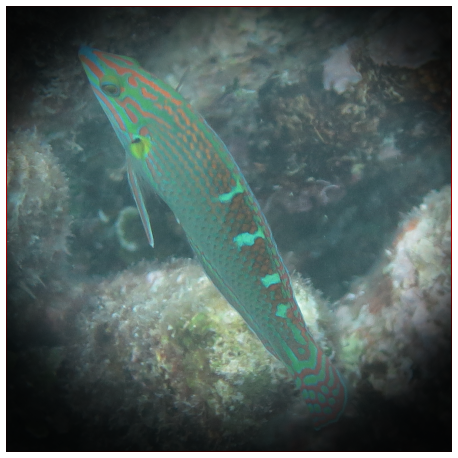More info
Datasheet
| Minimum Tank Size | 300 litres / 79.25 US gallons |
| Maximum Size | 13.0cm / 5.12inches |
| Reef Compatible | Reef safe with caution |
| Temperament | Mostly peaceful but might be aggressive towards similar species |
| Temperature | 22.2°C / 71.96°F - 25.6°C / 78.08°F |
| Specific Gravity | 1.020-1.025 |
| Carbonate Hardness | 8-12 |
| pH | 8.1-8.4 |
General Description
The Indian Ocean pinstriped wrasse, scientifically known as Halichoeres vrolikii, is a member of the Labridae family and is popular in aquariums for its attractive appearance. These fish are effective at eliminating flatworms and pyramid snails, contributing to the health of the aquarium ecosystem. They are generally peaceful but can display aggression towards similar species.
Aquarium Suitability
Indian Ocean pinstriped wrasses are suitable for aquariums, but caution is advised due to their tendency to eat small crustaceans like shrimp and their habit of jumping out of open aquaria. They require a minimum tank size of 300 liters and a deep sandy substrate of at least 2 inches for burrowing and feeling secure. They are hermaphroditic, changing gender from female to male as needed.
Demands, Care, and Hardiness
These wrasses have average hardiness and are sensitive during transportation and acclimatization into the aquarium. To ensure their well-being, it is essential to check for any injuries, particularly around the mouth, after transportation. They have specific dietary needs, feeding on larger crustaceans like shrimp and crabs, small crustaceans such as krill and mysis, and zooplankton like Cyclops and pods.
Reef Suitability
Indian Ocean pinstriped wrasses are deemed reef safe with caution, as they may prey on small invertebrates within a reef tank.
Aquarium Setup
For an Indian Ocean pinstriped wrasse, the aquarium setup should include appropriate hiding spaces and a diverse environment to mimic their natural habitat. Providing plenty of sand for burrowing, rocks for shelter, and open swimming areas will help create a suitable living space for these fish.
Behaviour
These wrasses exhibit interesting behaviors such as burying themselves in the sand when threatened or needing to sleep. They have a keen biological clock but may require time to adjust after transport.
Feeding and Diet
Their recommended diet includes a variety of foods such as larger crustaceans, small crustaceans, and zooplankton to ensure a balanced nutritional intake. They are known to feed on flatworms and can be trained to combat pyramid snails.
Habitat and Distribution
Native to the Indo-West Pacific region from the Maldives to the Moluccas in Indonesia, these wrasses can also be found in the Andaman Sea. Their distribution spans across the East Indian Ocean, West Indian Ocean, Australia, Indonesia, and the Central/West Pacific regions.

